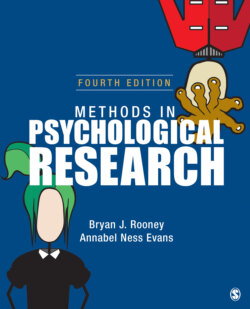Читать книгу Methods in Psychological Research - Annabel Ness Evans - Страница 22
На сайте Литреса книга снята с продажи.
The Critical Thinking Process
Оглавление1 Ask questions: What makes people happy?
2 Define the problem: What does happy mean? How will you know whether someone is or is not happy?
3 Examine the available evidence: Accepting a conclusion without evidence is not critical thinking.
4 Analyze assumptions and biases: Consider an advertiser who claims that medical doctors prefer her pain reliever. The conclusion she wants you to draw is that doctors prefer her pain reliever because it is a better product. But neither does she say that, nor is it likely to be true. Perhaps doctors prefer it because it is cheaper than other pain relievers. What if the advertiser says that no other pain reliever relieves pain better than hers? What does this really mean? It may mean that her pain reliever is as effective as every other pain reliever on the market. Again, remember the adage Consider the source. The advertiser has an interest in persuading you that her product is better, doesn’t she?
5 Avoid emotional reasoning: Feelings alone are not reliable guides to truth. Set feelings aside as you consider the evidence. Your feeling that something is true does not make it so.
6 Do not oversimplify: One dishonest used-car salesperson does not mean that all used-car salespeople are dishonest—at least we do not think so!
7 Consider other interpretations: In general, a critical thinker accepts the interpretation that accounts for the most evidence with the least number of assumptions. Consider the claim that interpersonal attraction occurs when the planets are aligned. This interpretation requires many assumptions about the nature of the relationship between planetary alignment and human behavior. A better interpretation of attraction might be that people like people who are similar to them.
8 Tolerate uncertainty: Psychologists know that there may be no good answer. A critical thinker knows this and is willing to accept this uncomfortable situation.
Consider a claim that we have heard many times:
“Eating raw oysters increases libido.”
First, let’s consider the possible sources of this popular belief. Perhaps someone in authority claimed that oysters increase libido. Perhaps this belief has been accepted for so long that it has become part of a general belief system (tradition). Perhaps we have had personal experience with eating oysters and the consequences thereof. Perhaps. But we think it is highly unlikely that this belief has come about as a result of scientific inquiry.
So let’s analyze this claim as a critical thinker might.
1 Ask the question: Does eating raw oysters improve libido?
2 Define the problem: How many raw oysters must we eat? How do we measure improved libido?
3 Examine the available evidence: Is there any scientific empirical evidence about oysters and libido?
4 Analyze assumptions and biases: Did the claim originate from oyster farmers?
5 Avoid emotional reasoning: Set aside our feelings about oysters.
6 Don’t oversimplify: Did we have one experience with increased libido after eating some oysters?
7 Consider other interpretations: If we have found that there is evidence that libido increases after eating oysters, could there be another explanation for this? Perhaps we only have the opportunity to eat raw oysters at fancy restaurants with candlelight and romantic settings.
All good scientists practice critical thinking and base their scientific beliefs primarily on empirical evidence. Let’s now turn to the goals or objectives of science.
